10-Step Program: From Digital Overload and Distraction to Traction and Personal Growth
Maximizing the Value of Our Time, Attention, Energy and Tech
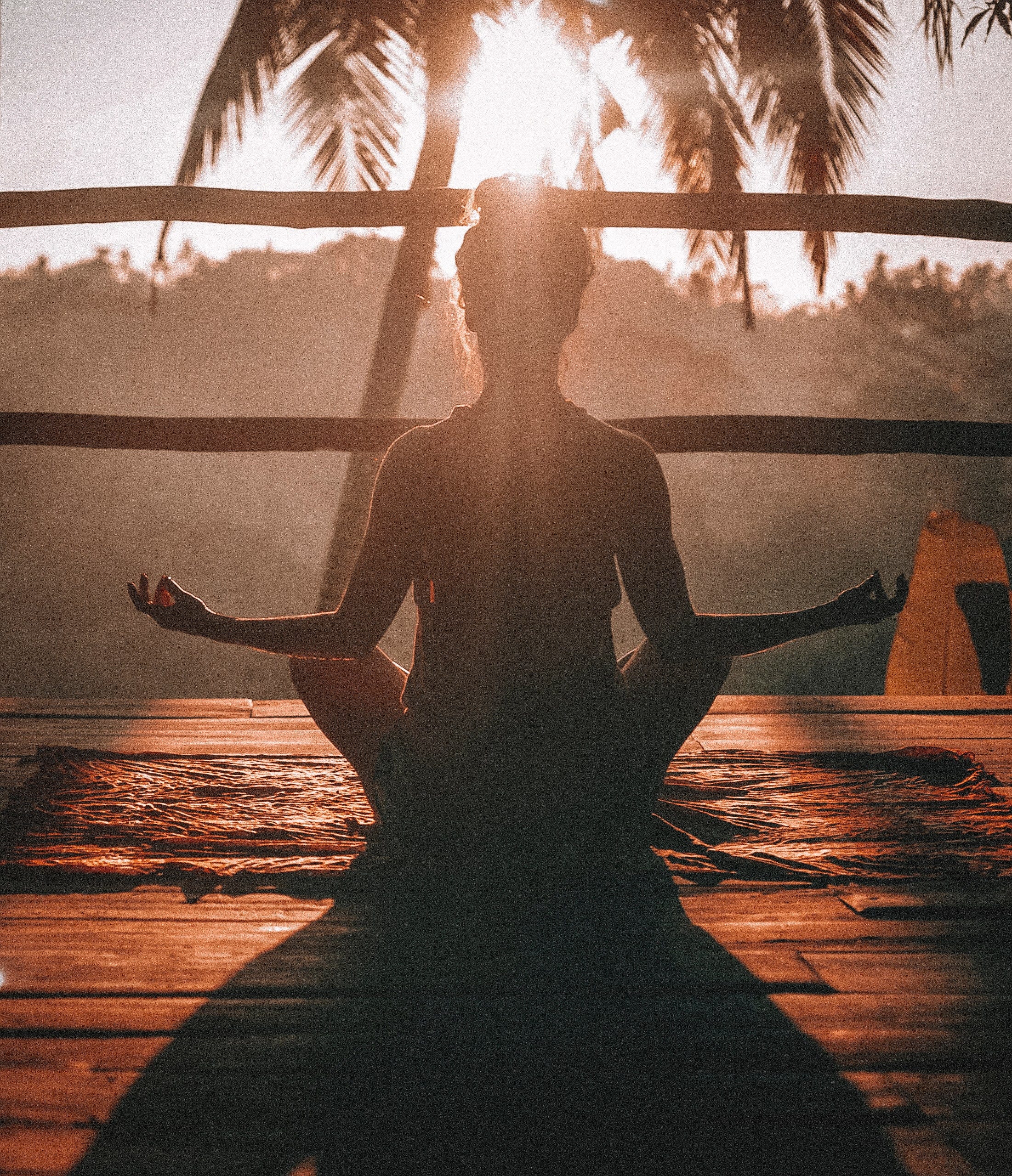
How’s that lockdown working out for ya?
How are you doing, now that you are resigned to spending so much of your time indoors and online? What effect does it have on your mental health? On your relationships? Your growth?
I’m gonna take a wild guess and assume that you don’t feel as if it’s being made easier for you to be the best version of yourself. To flourish, blossom, and thrive; to grow.
That’s probably why you’re reading this in the first place. Otherwise, you best turn around and see if you can get your money back.
This is what I’m going to give you here: the insights, tips, and practical steps to go from digital overload and distraction, to traction and personal growth. Using time, attention and technology starting from Purpose and Values instead of Pings and Interruptions.
But first, turn over the touch screen.
Why it’s so important to go from distraction to traction
The negative effects of technology overuse on our mental health and psychological wellbeing are fairly well established.
This is increasingly becoming everybody’s problem, my friend.
You can read more in this article about the science and statistics on smartphone addiction. In that article, we also focus on the positive effects of device usage.
Smartphone Addiction, Digital Health. In order to make a smart choice, it is imperative that we have a good…lifebeyond.one
Adding to that, after the first quarter of 2020 — and extending into 2021 — we’re all using our devices and the entertainment and social modes of communication they provide us with more than ever.
What is the effect that the current covid-19 crisis and lockdowns are proven to have on our device usage? What one would expect, is the following:
- The covid-19 crisis in itself is stressful for many people across the world;
- Covid-19 and subsequent lockdowns cause people to work and leisure from home at unprecedented levels, which leads to more technology usage;
- The stress from covid-19 is multiplied by the stresses of information overload and other negative effects of digital technology.
Turns out, this simple math works out and research indicates that this is exactly what is happening. In other words: the dangers of technology addiction are more and more becoming the dangers of tech overuse — to each and every one of us.
Point in case: This is the absolute opposite of becoming the best version of you, the opposite of flourishing and growing. That’s why it’s important to get from distraction to traction; from digital overload to personal growth.
Background info: Best books for ending digital overload, smartphone addiction and distraction
Next to the steps outlined in this article, and as a primer and for some background information on these practical steps, there are two books I would seriously advise you to check out and read to help get a better grasp of the problems at hand.
Added bonus: so long as you’re reading books, you’re training your mind to focus, and to focus on something other than digital information for a change. Win!
1. Life Beyond the Touch Screen — by yours truly
How much of our time do we now spend online? How is it helping us to be happy, to thrive, and to become a better version of ourselves?
My latest, award-winning book ‘Life Beyond the Touch Screen’ helps remind yourself or someone you care for, to make a conscious decision in the way that you allow technology — or really anything — to change you.
I’ve re-read my own book a few times this year, and am still pretty proud of it. What readers are saying about it has been absolutely humbling. Looking for ways to get the most out of every minute, with or without your devices? Do you or anyone you know need a primer for their mental health in combination with (over)use of technology?
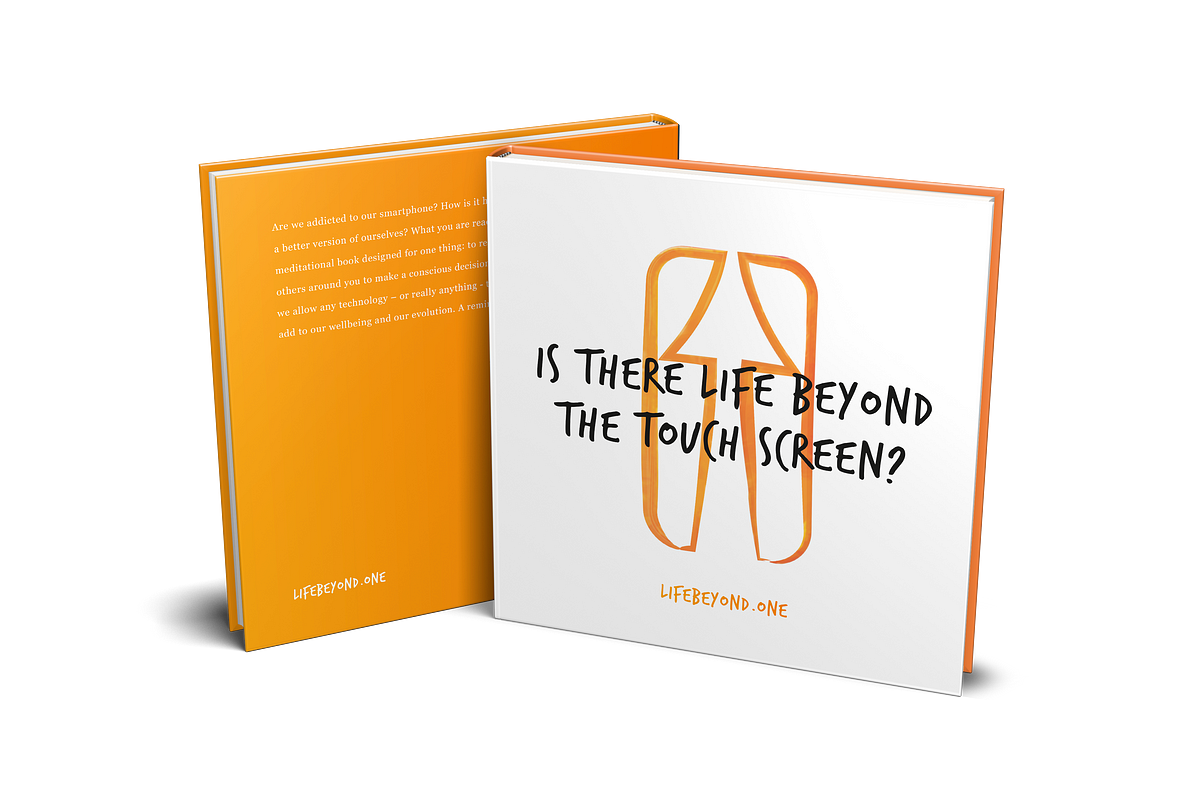
Order ‘Life Beyond the Touch Screen’ now, and for a limited offer use code MentalHealthFocus2020 on my website www.lifebeyond.one for a 15% discount on all items.
2. Indistractable — By Nir Eyal
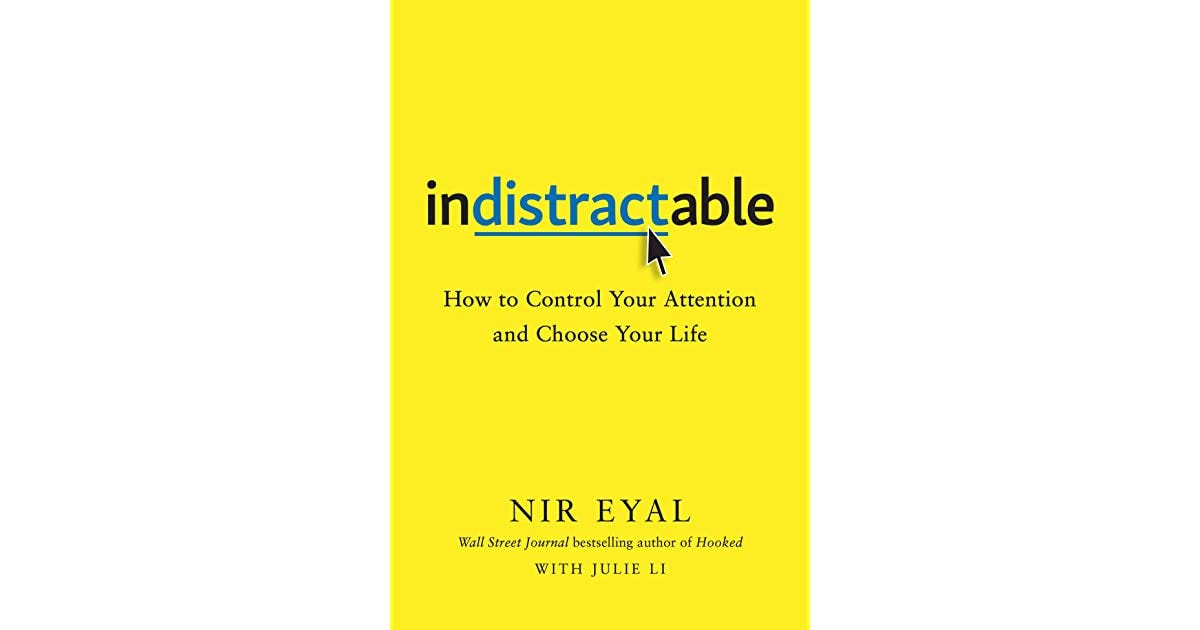
Absolutely one of my favorite (re)reads this year, is this book by two-times New York Times Bestselling author and all-round expert on the impact of digital technology on our mental health and habit formation, Nir Eyal. I honestly think it can work very well in tandem with my own book, and in the current following order.
In Indistractible, Nir explains how oftentimes our moments of distraction are not actually triggered by our smartphones or other external factors — most often, he writes;
Distraction comes from within. Our escape into our digital (or any other) distractions, is often based on a desire to escape the discomfort within ourselves.
In Indistractible, Nir gives you all you need to keep your mind and behavior on track with your values — and not with the demands and slings and stresses of daily (lockdown) life.
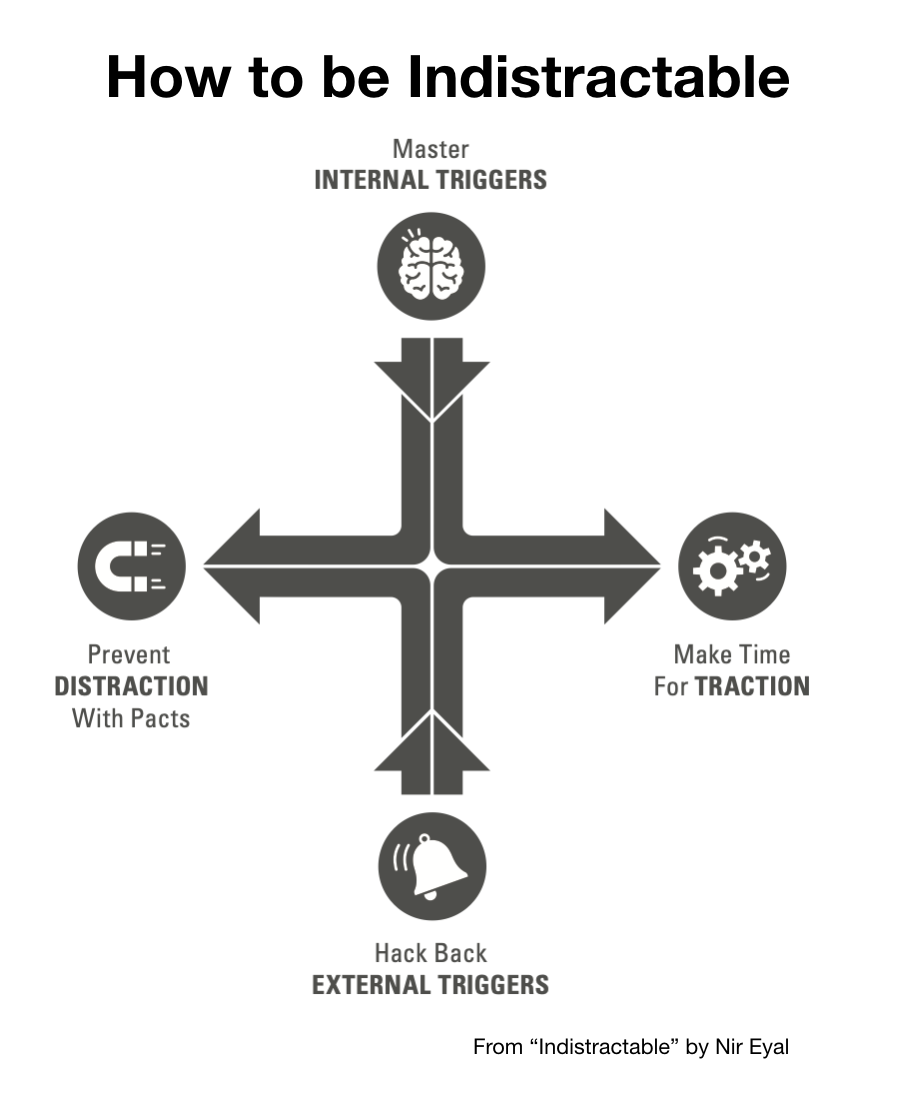
In the book he also introduces the wonderful concept of ‘traction’; spending time, energy and attention in alignment with your Purpose and Values instead of on things that distract from those.
Must read. 100%. I do not get paid by Nir for recommendations.
Both of the above books will help you get a firm basis. The ten steps outlined below will help you shake off any semblance of technology addiction and digital information overload, and help you use time, energy, attention and tech in alignment with your goals, purpose, and values.
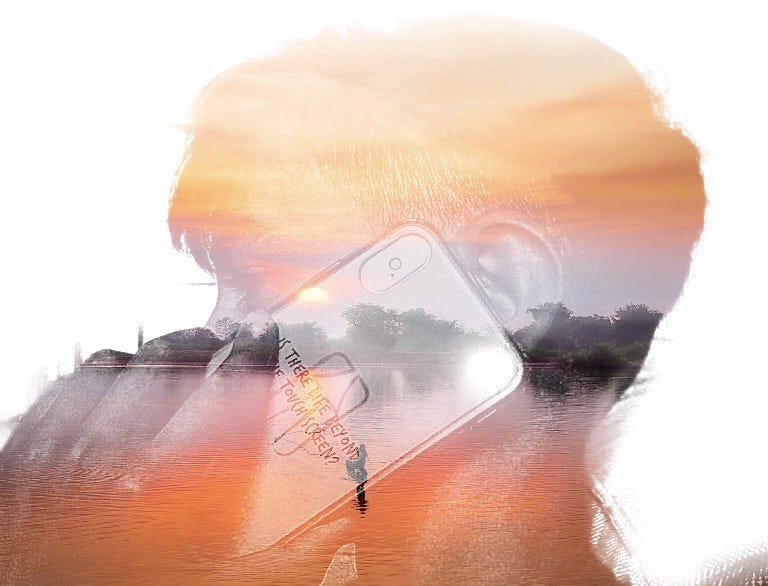
Ending technology overload: 5 basic steps
Although I now call myself a marketing and innovation philosopher, I have a background in psychology. I spent years doing the research for my own book, to fight my own smartphone addiction (and other addictions as well, such as smoking — the mother of difficult-to-knock addictions). I continued learning and doing research about the issues, as well as coaching people around me.
From all this, I have devised the following five-step plan to specifically help in fighting technology addiction and overuse.
These are the basic steps to ending tech addiction, or digital technology overload — however you want to call it. In the next section I offer you my five advanced steps, to go beyond that and over to using your time, attention, and tech in alignment with your personal growth.
1. Raise (your) awareness
As discussed in the previous sections, my book ‘Life Beyond the Touch Screen’ and in general my website lifebeyond.one may be a good place to start your journey.
You’re already reading up on the subject as we speak. I’m so proud.
Also, the Netflix Documentary “The Social Dilemma” offers a good amount of insights, as do the books ‘Hooked’ and ‘Indistractible’ by Nir Eyal.
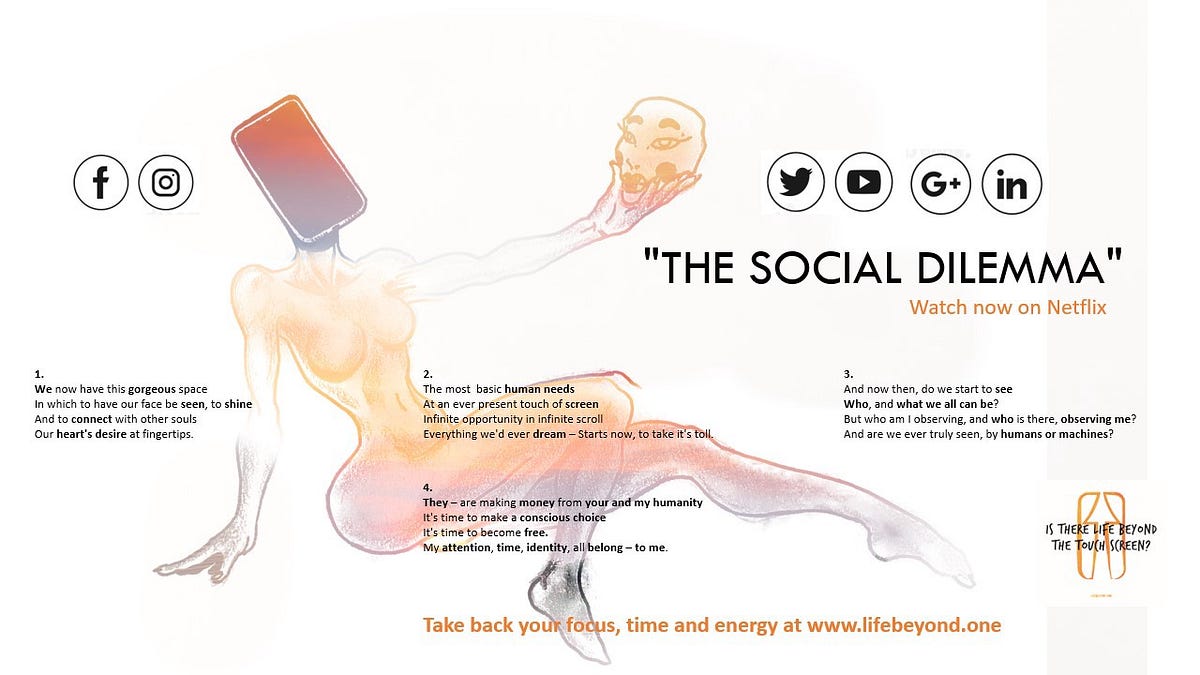
Finally, the Center for Humane Technology offers a lot of resources and I advise you to check these out as well. Do. Your own. Research.
2. Test yourself
Not sure whether you yourself or someone else whose digital behavior worries you, actually have or has a problem?
- Here’s a quick, global assessment you can take right away, from the US Addiction Center website.
If you want to take a more sound and slightly more conclusive test, you might want to check out:
- This Nomophobia test based on research from Iowa State University, or:
- This test by Dr. David Greenfield, at the Center for Internet and Technology Addiction.
Both of these tests have a scientific basis and are simple to use. Answer the questions and tally up your scores to get a decent indication of whether you or someone you care about indeed has a serious addiction to technology, their smartphone, and/or social media.
If that doesn’t satisfy you, it can hardly ever hurt to speak to a medical doctor or psychologist about what you’re experiencing.
3. Do a digital detox
This is really something that I advise anybody to do from time to time, regardless if you think you have a serious problem or not. Go offline for a few days or even for a full month, and see how that feels. Experience the wonder of your own, uninterrupted mind.
A digital detox — even if only for a few days — can be a great way to reset your brain, neurochemicals, and your behavior to baseline, healthy levels. It also makes it easier to choose and design the behavior that you think is healthy, going forward.
4. Take basic steps to digitally declutter your life & environment
If you hadn’t already — and in case you have, but it’s been a while: take the basic steps to digitally declutter your life and environment. Remove unnecessary apps from your phone, tablet, laptop or PC home screen.
Plan phoneless and internet-free time; meditate, walk, chill with people with no phone in sight, and plan these moments to recur in your schedule. Keep your smartphone and other devices out of your bedroom. This is a big one for relationships and specifically your love life. Trust me, and thank me later.
Turn off notifications for any app that doesn’t absolutely need to interrupt you for your life to function, and work offline whenever and wherever possible, to improve your focus.
5. Use specific tools and apps that help you curb technology usage
Why not — as a type of productivity and digital mental health Aikido — use the capabilities of your smart devices to your advantage? It’s entirely possible to go beyond simply turning off notifications and working offline, by using specific tools created to help you maintain focus. Turn this thing around.
Here are a few apps I recommend:
- The selfcontrol app; a free Mac app that helps you avoid distracting websites.
- The Freedom app; an internet, social media and ad blocker.
- Forest app; an app designed to help you stay away from your smartphone and focussed on your work.
- FocusMate, which couples you to a human accountability partner.
- FocusToFlow, which acts as a virtual accountability partner;
- And finally, the LetMeThink app + physical token that block you from using distracting apps and helps you focus on your work.
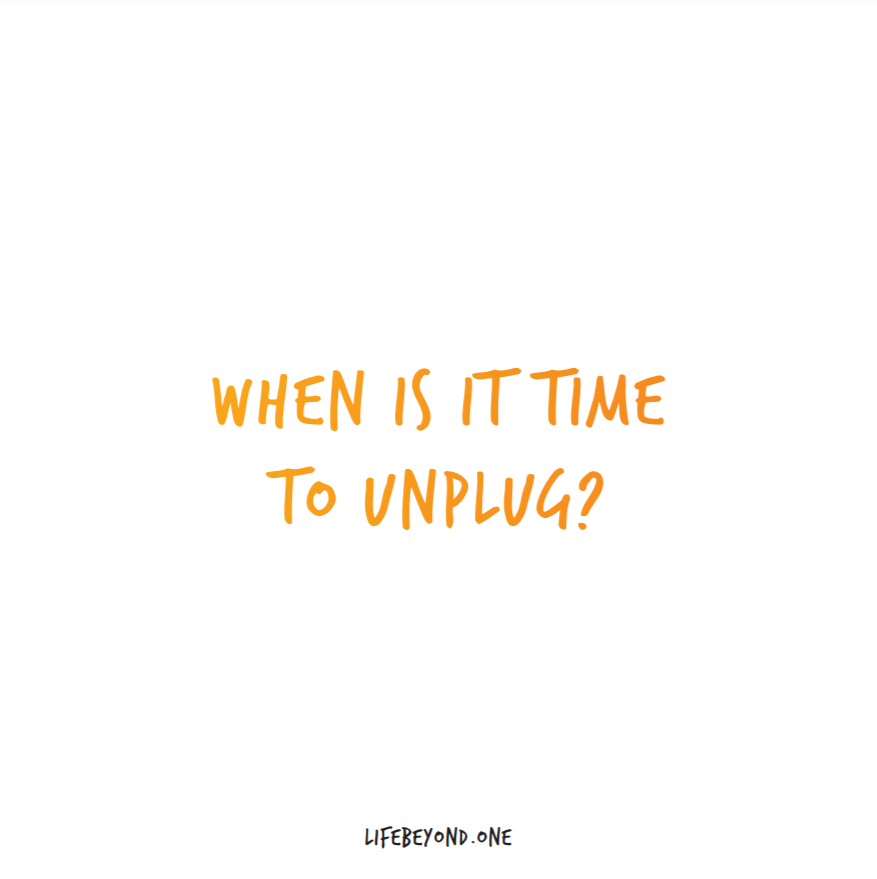
Now, after taking these basic steps, you might be ready to take it to the next level.
Advanced steps: Purpose Aligned technology usage and environmental design
Remember the productivity & mental health Aikido described in the last step of the five basic steps above? We can go a little further on that stream, my friend, and go beyond just simply overcoming digital information overload or technology addiction — to 10X ourselves with the help of technology.
Now, please realize: the core of my methods and thinking is not to get you to stop using digital technology. There’s just way too much good to get from technology — if used in the right way.
The core of the advanced steps — and of the advice near the end of my book — is to align our usage of technology with our Purpose, and then to align everything else in our environment with that as well, as much as possible. Starting with your relationships and communications, and the way you spend your time and attention — and building from there.
Remember Nir Eyal’s Indistractible framework?

Take these advanced steps, and take beating social media addiction to the next level — to go beyond:
6. Figure out your purpose and values and stay connected to those
This is my way of saying what Nir Eyal would label ‘Going from Distraction to Traction’. Take the time to figure out what your Purpose is — that is to say; what a higher goal is for you in your life that you can feel inspired by.
What are your values? What is the value you can create for people around you? Write down your purpose; your goals and values in a place that you can refer back to. Start looking at ways to use your technology aligned with your Purpose and Values, instead of reactively.
Read Nir Eyal’s ‘Indistractable’ to understand more about the need to go from Distraction to Traction: spending more time on the people and activities that matter most to you.
From there on out: ask yourself the question on the regular:
“Is what I’m spending my time and attention on right now aligned with my Purpose and Values, or not?”
I’d also advise you to journal daily, using a little notebook — preferably physical (like a Bambook) but digital if you must, to help stay connected to your sense of purpose and your values — journaling has been proven to help you make small choices based on those instead of on the slings and arrows of daily life.
7. Embed your new way of working in your social environment
Figure out your most important relationships; structure, and align your time and attention spend.
Researchers and authors in the space of habit formation often speak of Environmental Design. Now, as it turns out, environmental design goes beyond the design of your physical and digital environment, as it pertains to habit formation. It’s also — to a very large and influential extent — about the design of your social environment.
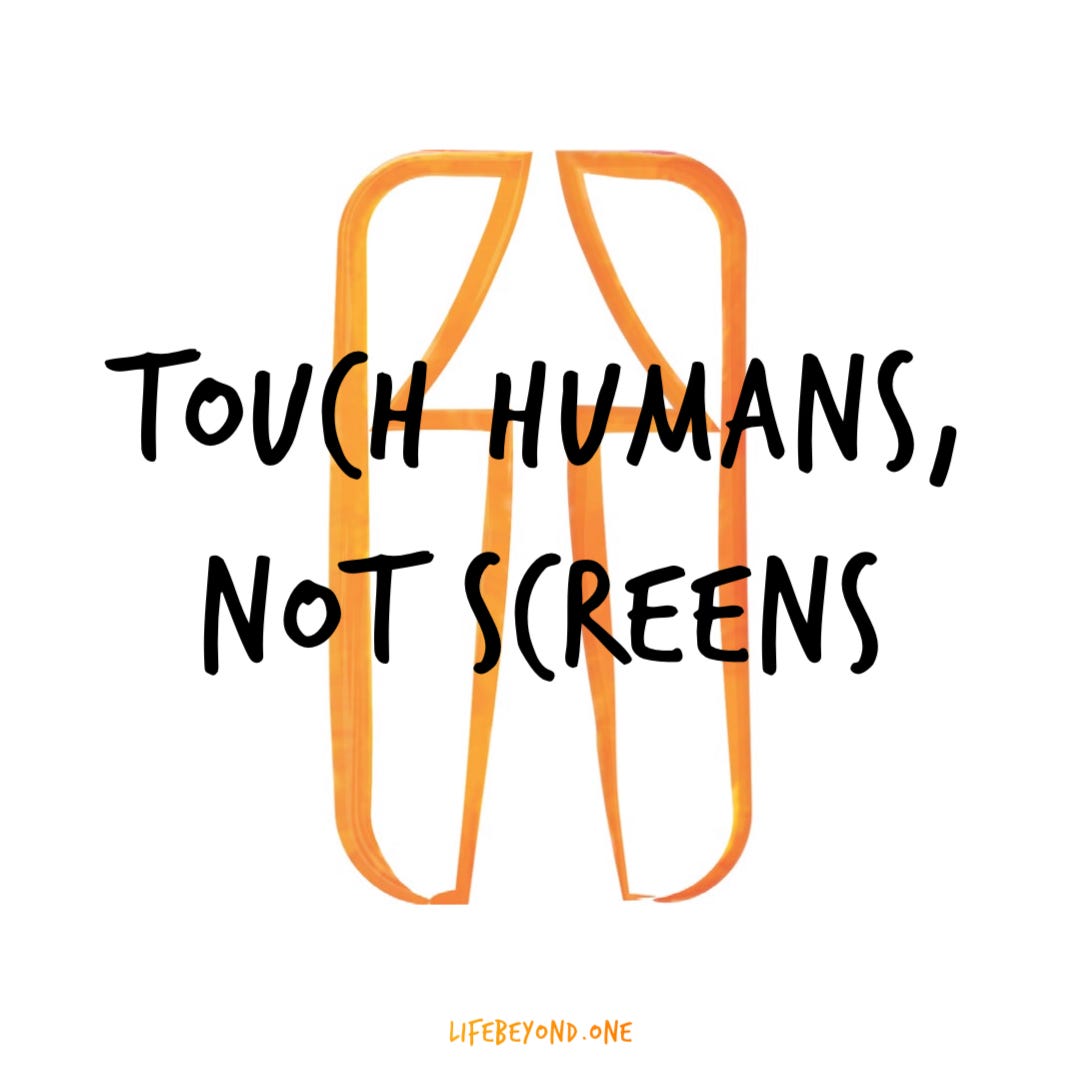
To that effect: take the time to look at your social environment; your first circle of 5; your closest relationships — at home and at work; your 15 closest relationships; your circle of 50 friends and family members, and so on.
Which of these relationships matter most to you? Which matter most to your Purpose and values as you have defined them? Now, how are you spending and allocating your time across these different circles and relationships? Write it down, check your calendar, and then check your values again (see step 6).
Next to that, if you’re serious about using technology less, or using technology (and time, energy, and attention) in a more Purpose-driven and balanced way, it can be very wise to make your direct social environment a part of that. Make sure your spouse or your boss or coworkers know you’re trying to be offline more. Talk to your children, give them a healthy example.
Go one step beyond that, and find one or more peer-to-peer coaches or accountability-buddies for yourself, as the app FocusMate would have you do on their platform. Have regular, short accountability meetings with your peer-to-peer coach and help each other stay on track with your goals.
8. Figure out what time you need for self-care
To be the best you can be, to stick to your plans and your carefully designed new habits — you need to be well-rested. As happy as possible. Energetic and inspired. This works for quitting a social media addiction, but just as well for quitting smoking, alcohol, et cetera.
Assess how much time you need for self-care; mental, physical, emotional — to rest, to recharge, to work out; to hang out, to do nothing, to have sex, to eat healthily — or to cheat on your diet and just enjoy yourself — and plan that time. Include time for lame stuff like administration, taxes, and house cleaning chores. Cluttered spaces and administrative/financial stresses are the opposite of self-care.
In general, nothing spells: “I’m not gonna stick to my new habits” as clearly as a tired, strung-out, stressed you. Use your p2p coach as a check; first and foremost at every p2p coaching session or accountability-meeting you should be asking each other: “How have you been taking care of yourself?”
9. Strategically plan & automate your work
Have you ever taken the time to look at how you use your time at work? To look at what tasks take up the most of your time, and to check these tasks along the measures of a. where do you create the most value, and b. what tasks align best with your personal goals or purpose, and those of your team and the broader organization?
So often we simply spend our time the way we simply spend our time, and often based on what seems urgent in the moment.
Figure out what time you need to do the most important parts of your job, and rebuild your daily and weekly schedule accordingly. Next, find out what minor or repetitive tasks you can delegate — who knows how happy and how aligned with Purpose someone else could be in doing those tasks?
Crucially, next, assess what tasks you can batch and automate, and use tech to your advantage; simple automation of workflows can easily 2X your productivity all by itself. Use apps like IFTTT, Zapier, or in a Microsoft environment use Microsoft Flow to automate repetitive tasks.
Schedule a quarterly check on your schedule, to see if the way you’re spending your time is still the best and most aligned way, and adjust where needed.
10. Plan your time diligently and Purpose-aligned
Most important of all: operationalize the use of time, energy, attention and technology in alignment with your purpose, values, and growth — by planning in advance.
Plan the time for finding your Purpose. Plan the time for staying connected to it. Plan the time for self-care and for relationships. Plan time to connect with your peer-to-peer coach. Plan your work strategically.
As you see: the management of time is one of the most important, crucial steps to not only overcome social media or smartphone addiction, but to become the best version of you that you could possibly be.
To that order: keep an eye on your calendar daily, weekly, and monthly. Make your schedule more important, and make it a point to stick to your planning — including when you plan to do absolutely nothing.
But be agile; leave space to be able to respond to spur-of-the-moment requests, and make a conscious choice to deviate from your planning whenever you see fit.
Just keep checking yourself to make conscious choices to do spend your time and attention on those things, people, relationships, and taks that matter most to you.
The easiest way to help you do that, is to create a schedule, to regularly meet with a human being to discuss your success in sticking to that schedule, and to regularly assess and adjust your schedule as needed. Finally, daily (bullet) journaling can greatly help in this area as well.
Wrapping it all up: 10 steps to a better you
So, my friend, there you have it. The five basic steps to combat digital information overload and quit technology addiction, and five advanced steps to go beyond that and become the best and most happy version of you that you could possibly be.
- Start by raising your awareness.
- Test yourself.
- Do a digital detox.
- Take the basic steps to digitally declutter your life and physical environment.
- Use specific tools and apps designed to combat digital technology overload.
Then;
- Figure out your purpose and values and write them down;
- Embed your new way of working in your social environment;
- Figure out what time you need for self-care;
- Strategically plan & automate your work;
- Plan your time aligned with your purpose, and stick to the plan.
Seriously. Get your notebook out. Open your calendar. Get to it!
I hope you find these tips helpful — I have benefited greatly from these myself and so have people I’ve shared them with through my work. I’d love to hear from you. Namasté.

My book “Life Beyond the Touch Screen” is available here as an e-book or paperback. It’s a meditational booklet designed to increase our consciousness around the impact of digital technology on our lives as individuals, in organizations and society. A reminder to choose. Take back your energy, focus, and time: get your copy now.
For a limited offer use code MentalHealthFocus2020 on my website www.lifebeyond.one for a 15% discount on all items.
